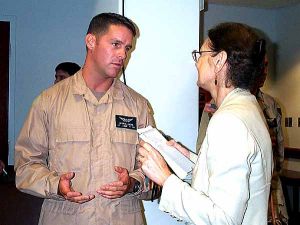|
Cochie is with the 160th Special Operations Aviation Regiment at Fort Campbell, Ky. Last October, he was with the first wave of U.S. soldiers to go to Afghanistan. Planning and coordinating air missions involving Green Berets, Navy SEALS and other ground forces was his order of the day. |









